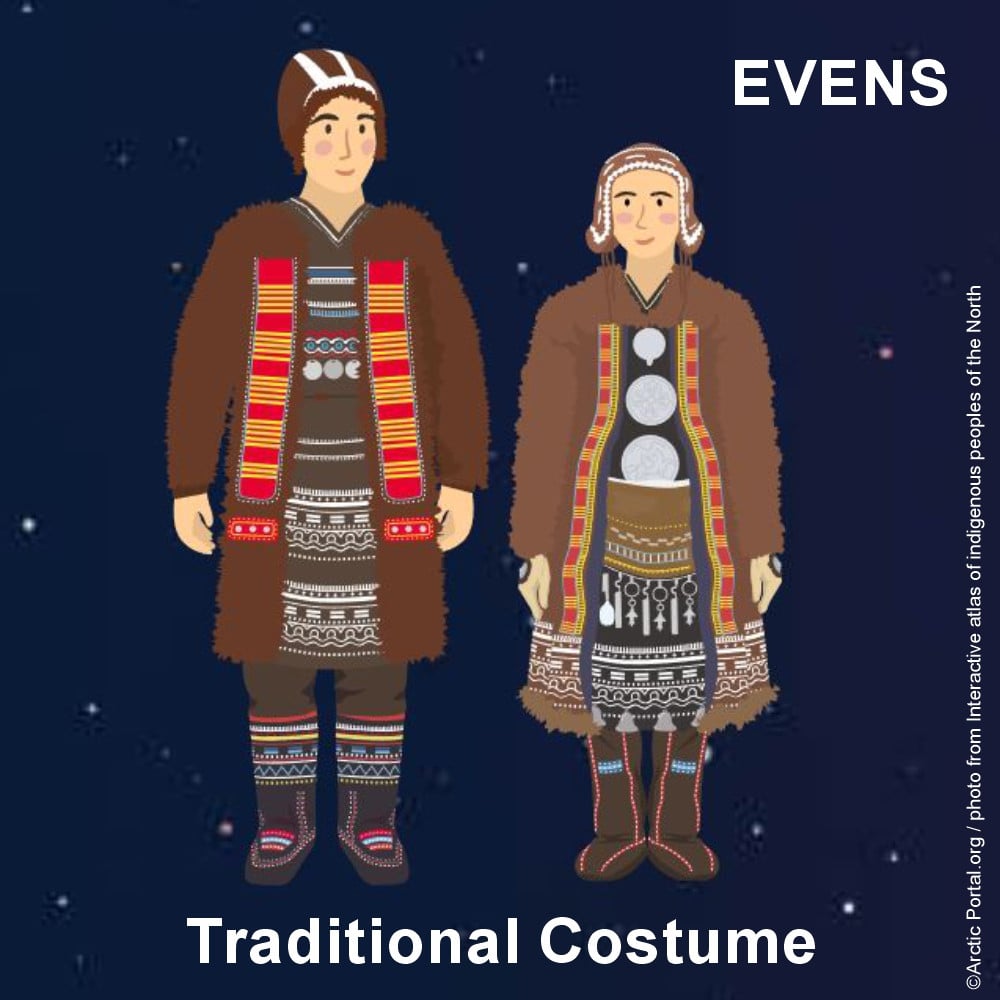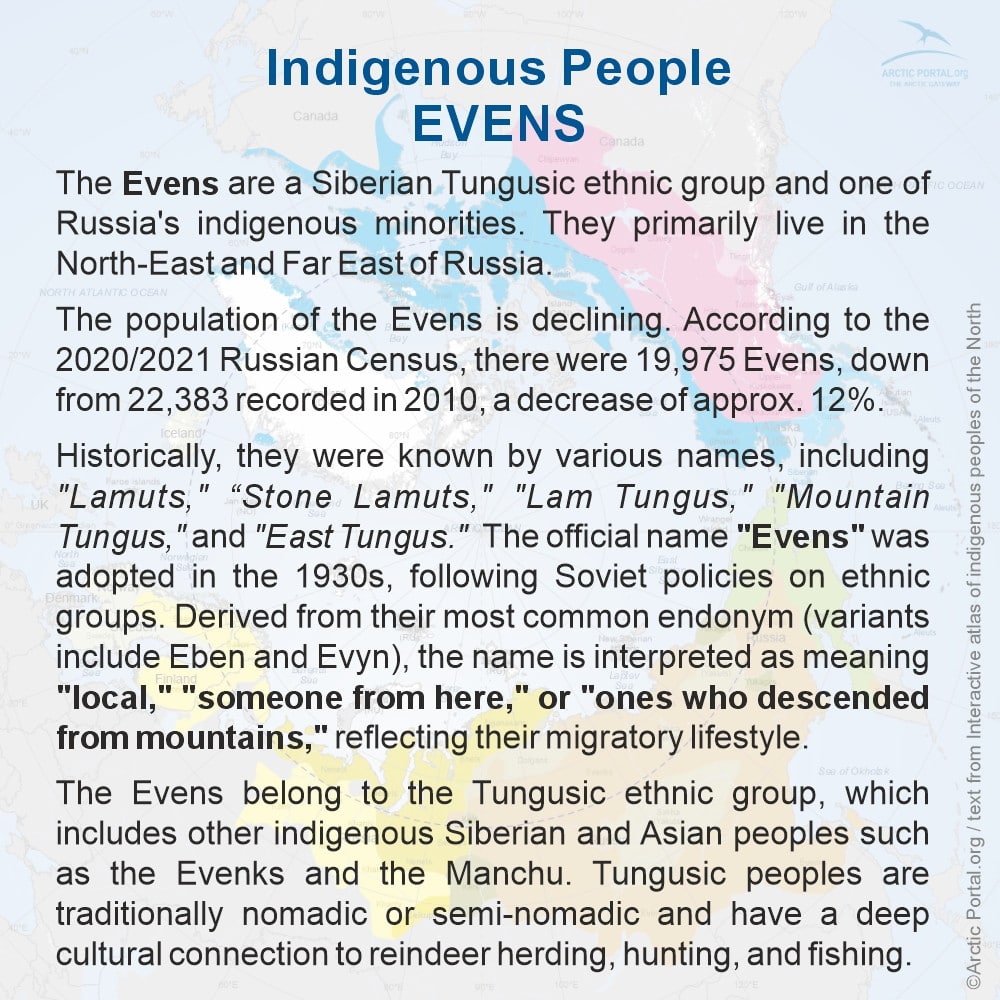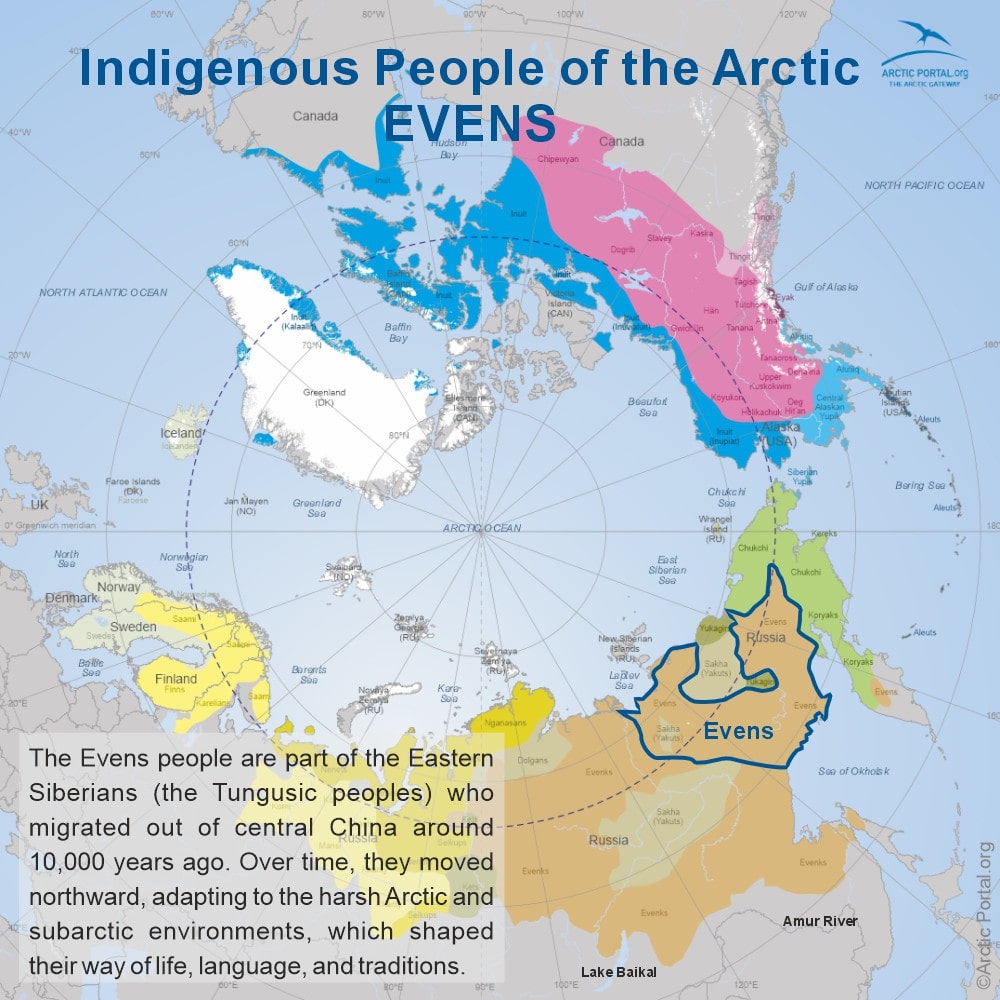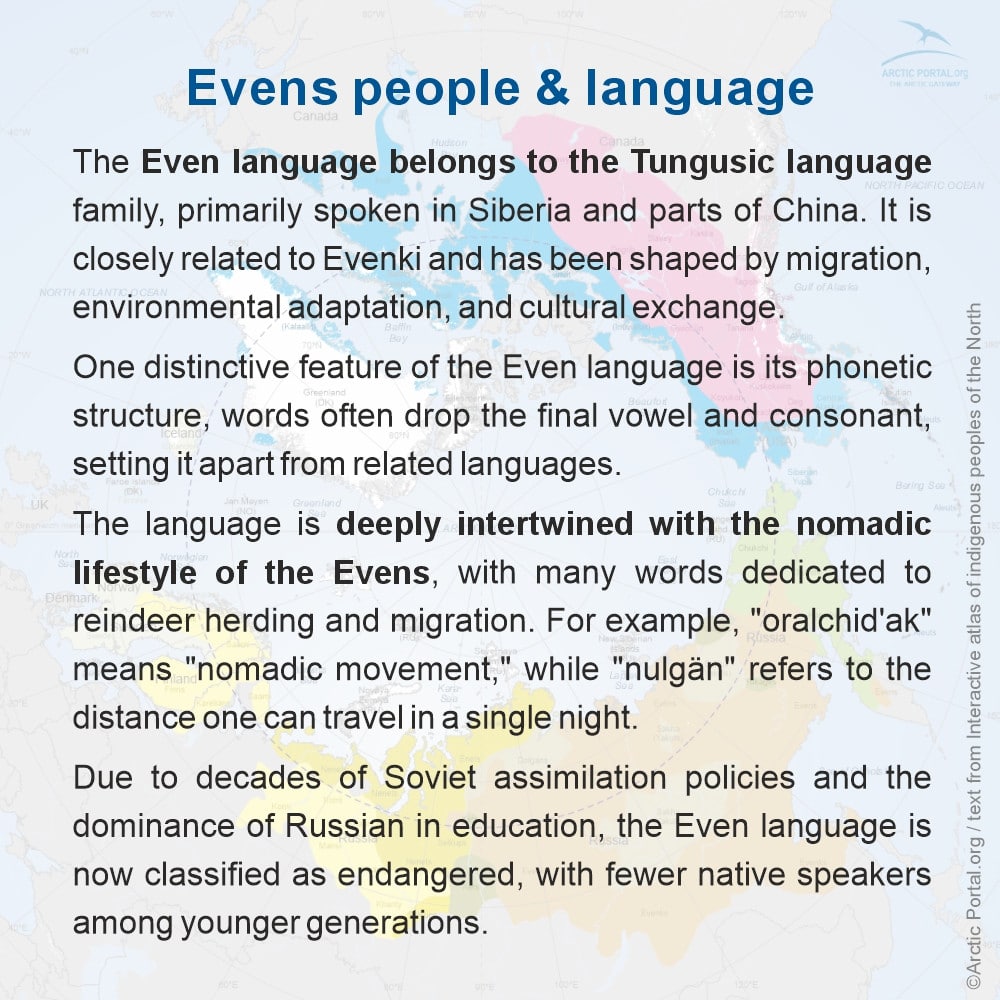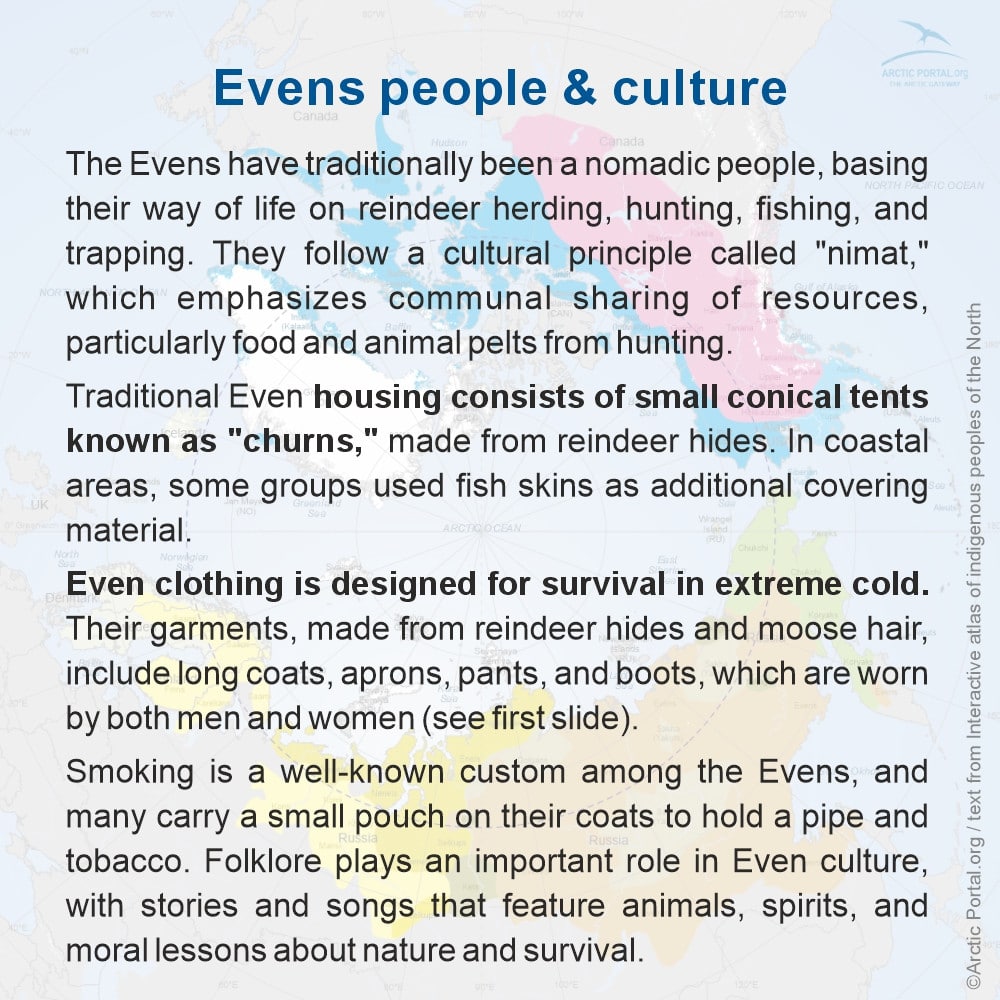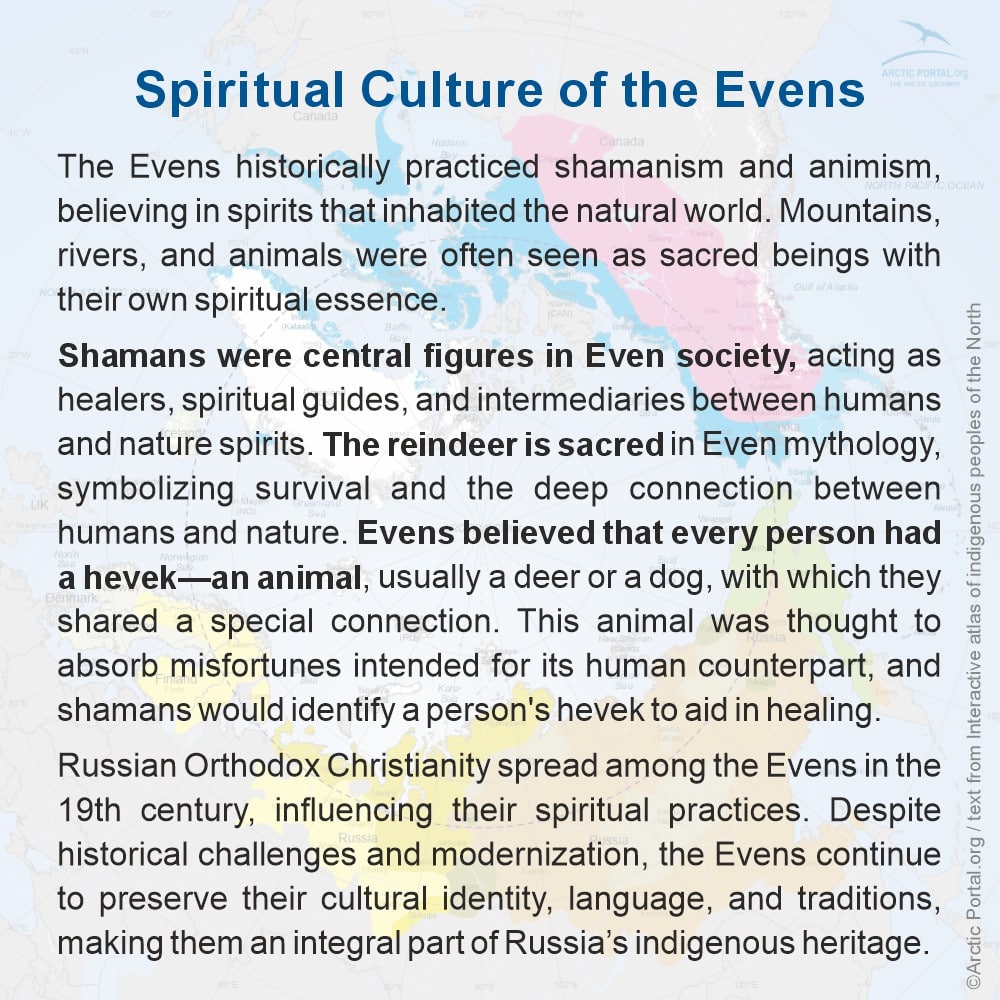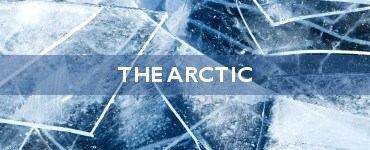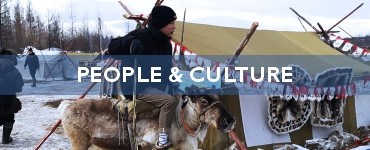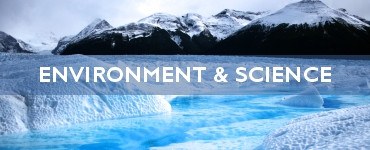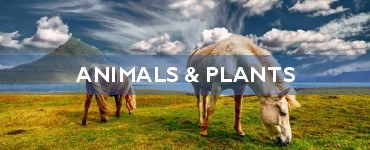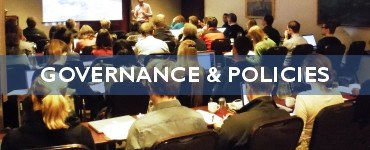The Evens are a Siberian Tungusic ethnic group and one of Russia's indigenous minorities. They primarily live in the North-East and Far East of Russia.
The Evens are a Siberian Tungusic ethnic group and one of Russia's indigenous minorities. They primarily live in the North-East and Far East of Russia.
The population of the Evens is declining. According to the 2020/2021 Russian Census, there were 19,975 Evens, down from 22,383 recorded in 2010, a decrease of approx. 12%.
Historically, they were known by various names, including "Lamuts," “Stone Lamuts," "Lam Tungus," "Mountain Tungus," and "East Tungus." The official name "Evens" was adopted in the 1930s, following Soviet policies on ethnic groups. Derived from their most common endonym (variants include Eben and Evyn), the name is interpreted as meaning "local," "someone from here," or "ones who descended from mountains," reflecting their migratory lifestyle.
The Evens belong to the Tungusic ethnic group, which includes other indigenous Siberian and Asian peoples such as the Evenks and the Manchu. Tungusic peoples are traditionally nomadic or semi-nomadic and have a deep cultural connection to reindeer herding, hunting, and fishing.
The Evens people are part of the Eastern Siberians (the Tungusic peoples) who migrated out of central China around 10,000 years ago. Over time, they moved northward, adapting to the harsh Arctic and subarctic environments, which shaped their way of life, language, and traditions.
People & Language
The Even language belongs to the Tungusic language family, primarily spoken in Siberia and parts of China. It is closely related to Evenki and has been shaped by migration, environmental adaptation, and cultural exchange.
One distinctive feature of the Even language is its phonetic structure, words often drop the final vowel and consonant, setting it apart from related languages.
The language is deeply intertwined with the nomadic lifestyle of the Evens, with many words dedicated to reindeer herding and migration. For example, "oralchid'ak" means "nomadic movement," while "nulgän" refers to the distance one can travel in a single night.
Due to decades of Soviet assimilation policies and the dominance of Russian in education, the Even language is now classified as endangered, with fewer native speakers among younger generations.
People & Culture
The Evens have traditionally been a nomadic people, basing their way of life on reindeer herding, hunting, fishing, and trapping. They follow a cultural principle called "nimat," which emphasizes communal sharing of resources, particularly food and animal pelts from hunting.
Traditional Even housing consists of small conical tents known as "churns," made from reindeer hides. In coastal areas, some groups used fish skins as additional covering material.
Even clothing is designed for survival in extreme cold. Their garments, made from reindeer hides and moose hair, include long coats, aprons, pants, and boots, which are worn by both men and women (see first slide).
Smoking is a well-known custom among the Evens, and many carry a small pouch on their coats to hold a pipe and tobacco. Folklore plays an important role in Even culture, with stories and songs that feature animals, spirits, and moral lessons about nature and survival.
Spiritual Culture of the Evens
The Evens historically practiced shamanism and animism, believing in spirits that inhabited the natural world. Mountains, rivers, and animals were often seen as sacred beings with their own spiritual essence.
Shamans were central figures in Even society, acting as healers, spiritual guides, and intermediaries between humans and nature spirits. The reindeer is sacred in Even mythology, symbolizing survival and the deep connection between humans and nature. Evens believed that every person had a hevek—an animal, usually a deer or a dog, with which they shared a special connection. This animal was thought to absorb misfortunes intended for its human counterpart, and shamans would identify a person's hevek to aid in healing.
Russian Orthodox Christianity spread among the Evens in the 19th century, influencing their spiritual practices. Despite historical challenges and modernization, the Evens continue to preserve their cultural identity, language, and traditions, making them an integral part of Russia’s indigenous heritage.
Visit our Map Gallery Arctic Portal specializes in creating customized graphical maps that cover a range of significant Arctic topics with global recognition. We are continuously working on new maps and adding them to our Gallery.

